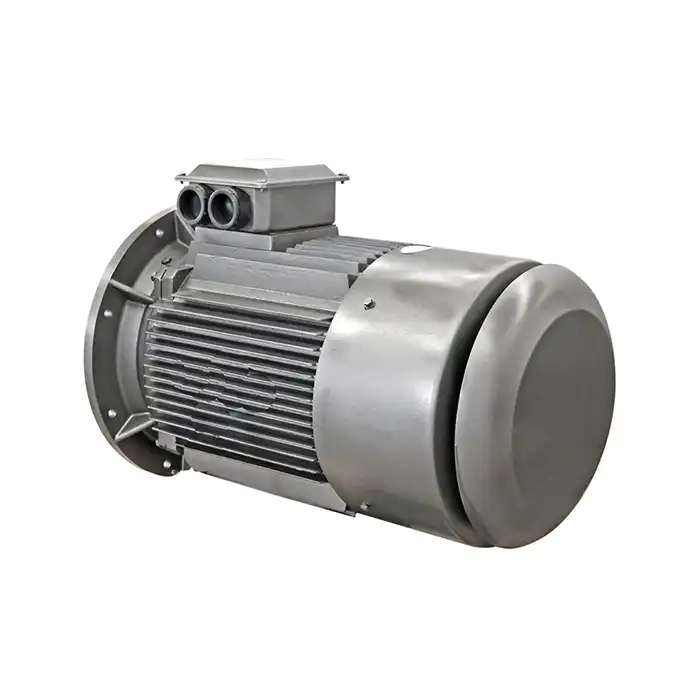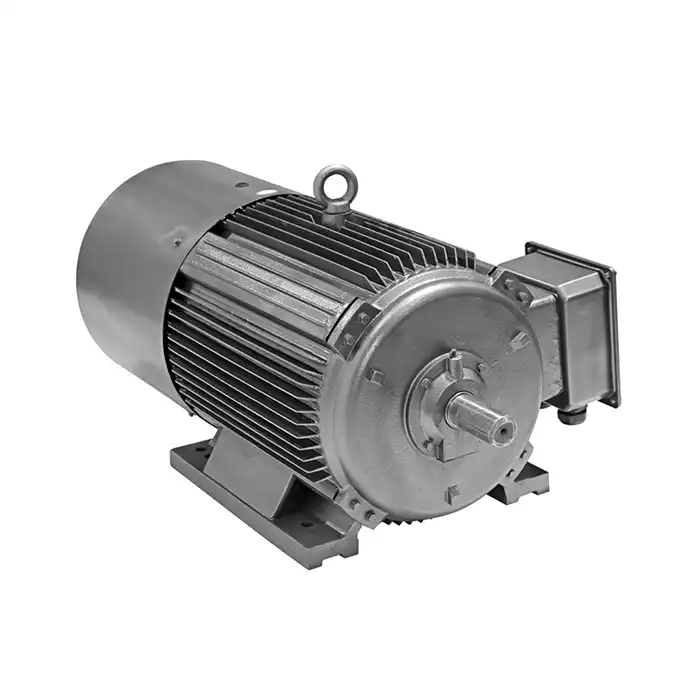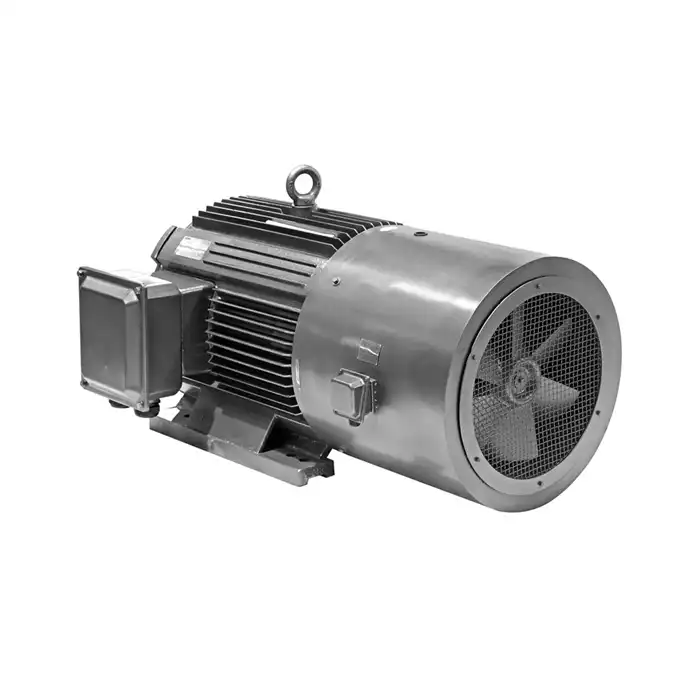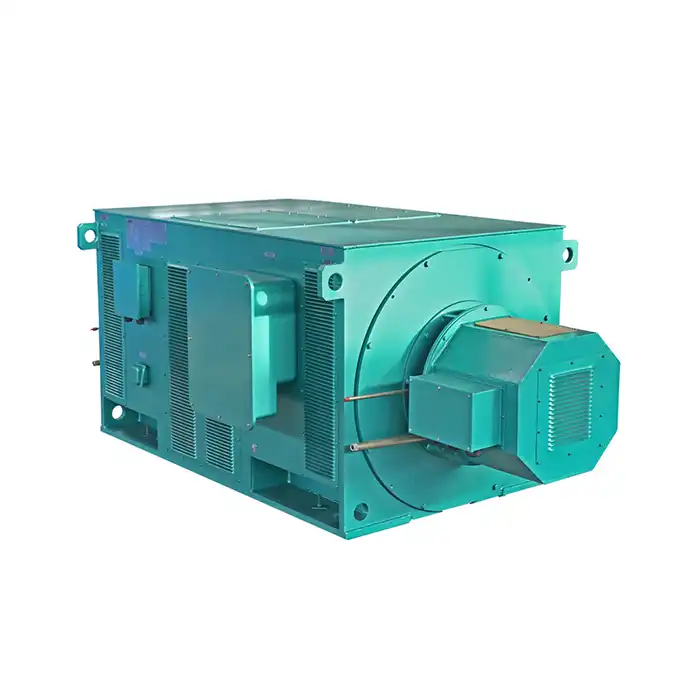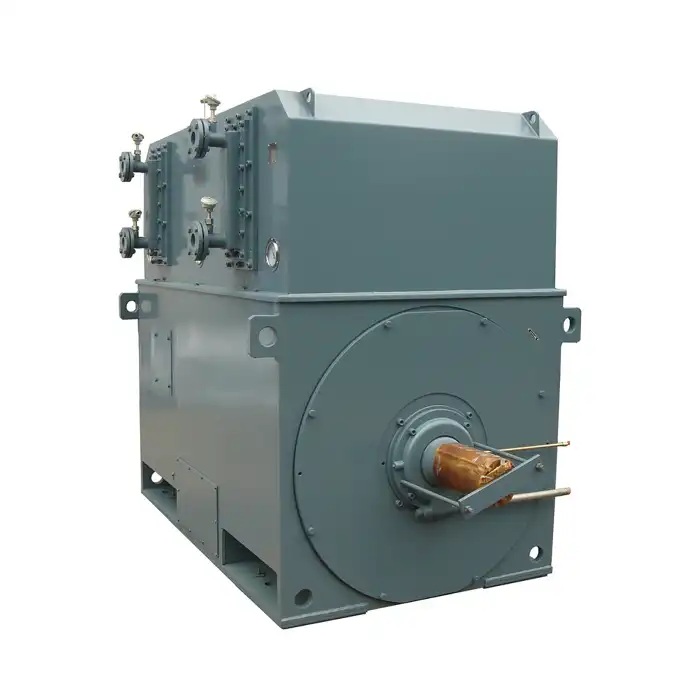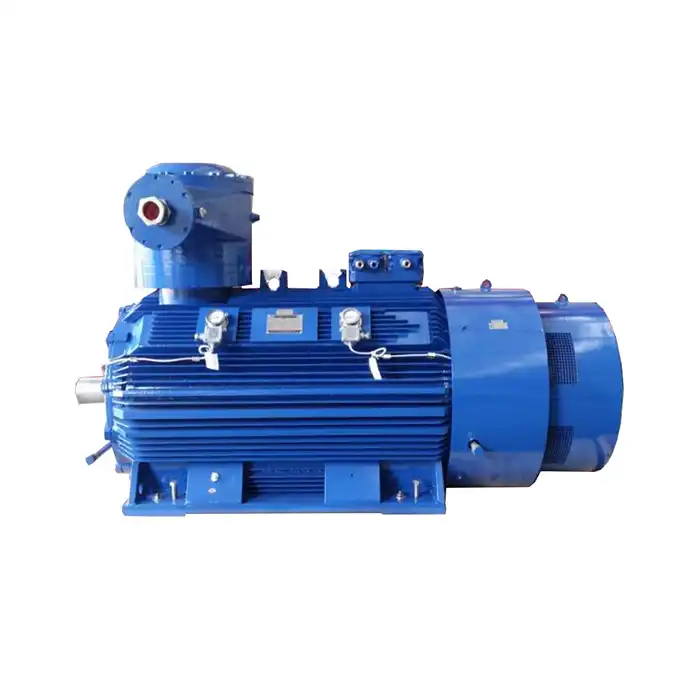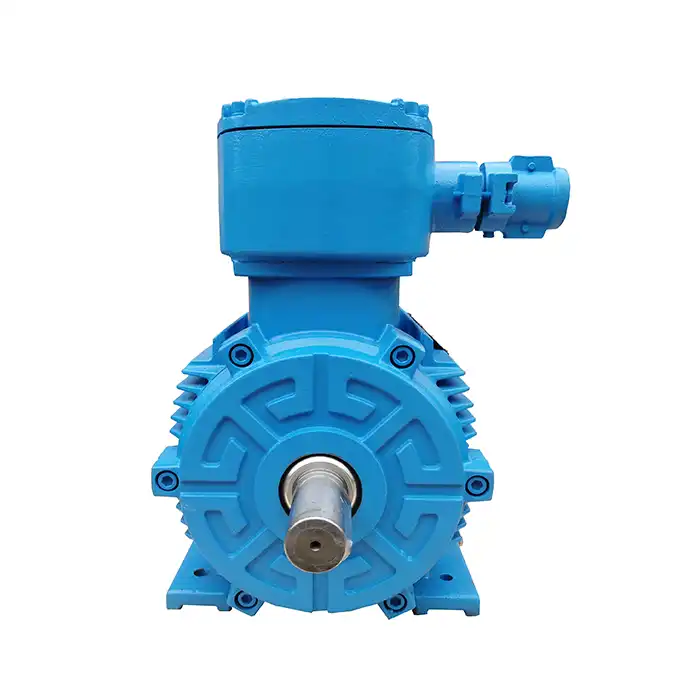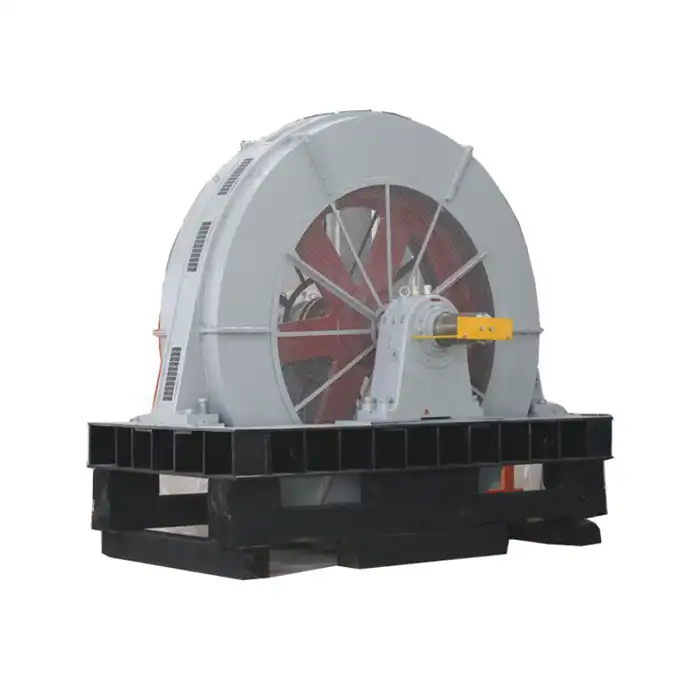Why Wound Rotor Induction Motors Outperform in Low-Speed Apps?
In the realm of industrial machinery, wound rotor induction motors have established themselves as indispensable components, particularly in low-speed applications. These specialized motors offer unique advantages that make them well-suited for tasks requiring high torque at low speeds. This article delves into the reasons behind their superior performance and examines their applications in various industrial settings.

How do wound rotor motors maintain torque at low speeds?
Wound rotor induction motors are engineered to deliver exceptional torque characteristics across a wide speed range, including at very low speeds. This capability stems from their unique design and operational principles.
The Role of Rotor Winding in Torque Generation
The distinguishing feature of a wound rotor motor is its rotor construction. Unlike squirrel cage rotors, wound rotors have actual windings connected to slip rings. This design allows for the insertion of external resistance into the rotor circuit, which plays a crucial role in torque generation and speed control.
When external resistance is added to the rotor circuit of a Wound Rotor Induction Motor, it modifies the motor's torque-speed curve. This adjustment enables the motor to produce higher torque at lower speeds, a characteristic that is particularly valuable in applications requiring high starting torque or sustained operation at reduced speeds.
Torque Control Through Resistance Variation
The ability to vary the rotor resistance provides a means of controlling both the motor's speed and torque output. As the resistance is increased, the motor's speed decreases while its torque capacity at that speed increases. This relationship allows for fine-tuning of the motor's performance to match the specific requirements of the application.
In low-speed scenarios, the added resistance shifts the point of maximum torque to lower speeds. This shift enables the motor to maintain high torque output even as its speed is reduced, a capability that is often crucial in heavy-duty industrial applications.
Comparing speed control capabilities: Wound rotor vs VFD-driven motors
When it comes to speed control in industrial motors, both wound rotor motors and Variable Frequency Drive (VFD) controlled motors offer viable solutions. However, each has its own strengths and limitations, particularly in low-speed applications.
Wound Rotor Motor Speed Control
Wound rotor motors achieve speed control through the adjustment of rotor resistance. This method offers several advantages:
- High starting torque: The ability to insert high resistance at startup allows for significant torque generation even at very low speeds.
- Smooth acceleration: Gradual reduction of rotor resistance enables smooth speed increase without current spikes.
- Energy efficiency at low speeds: Unlike VFD systems, wound rotor motors can operate efficiently at low speeds without additional cooling.
- Simplicity: The speed control mechanism is straightforward and doesn't require complex electronic controls.
VFD-Driven Motor Speed Control
VFD systems control Wound Rotor Induction Motor speed by adjusting the frequency of the power supply. This method has its own set of advantages:
- Wide speed range: VFDs can provide speed control from near-zero to above base speed.
- Precision control: Digital control allows for very precise speed adjustments.
- Energy efficiency at higher speeds: VFDs can optimize motor efficiency across a broad speed range.
- Compatibility: VFDs can be used with standard squirrel cage motors, offering flexibility in motor selection.
Comparative Analysis for Low-Speed Applications
In low-speed applications, wound rotor motors often have the edge:
- Thermal management: Wound rotor motors handle low-speed operation better without overheating.
- Torque production: They can produce higher torque at low speeds without the need for oversizing.
- Reliability: With fewer electronic components, they can be more reliable in harsh industrial environments.
- Cost-effectiveness: For applications requiring frequent starts and stops or sustained low-speed operation, wound rotor motors can be more economical.
While VFD systems offer advantages in terms of control precision and flexibility, wound rotor motors remain a preferred choice for many low-speed, high-torque applications due to their robust performance and simpler control mechanism.
Case studies of wound rotor motors in slow-speed conveyor systems
To illustrate the practical advantages of wound rotor induction motors in low-speed applications, let's examine their implementation in conveyor systems across various industries.
Mining Industry: Overland Conveyor Systems
In a large-scale mining operation, a 2-kilometer overland conveyor system was implemented to transport ore from the mining site to the processing plant. The system required precise speed control and high starting torque due to the heavy loads and frequent starts and stops.
A 1500 kW wound rotor induction motor was selected for this application. The motor's ability to provide high starting torque allowed the fully loaded conveyor to start smoothly, even after emergency stops. The speed control achieved through rotor resistance adjustment enabled the conveyor speed to be optimized based on the incoming ore volume, enhancing overall system efficiency.
Results:
- 50% reduction in startup current compared to squirrel cage motors
- Improved energy efficiency due to optimized speed control
- Enhanced reliability with fewer mechanical stresses during starts
Steel Mill: Hot Rolling Mill Conveyor
A steel mill implemented a low-speed conveyor system for transporting hot rolled steel sheets. The application demanded precise speed control to synchronize with the rolling process and the ability to withstand high ambient temperatures.
A 750 kW wound rotor motor was employed, operating at speeds as low as 10% of the rated speed for extended periods. The motor's inherent ability to manage heat at low speeds proved crucial in this high-temperature environment.
Outcomes:
- Maintained consistent torque at speeds as low as 10% of rated speed
- Operated reliably in ambient temperatures exceeding 50°C
- Achieved a 30% improvement in production rate due to precise speed synchronization
Cement Plant: Raw Material Handling System
A cement manufacturing facility upgraded its raw material handling system with a series of interconnected conveyors. The system required variable speed operation to accommodate fluctuating material flow and the ability to handle frequent stops and starts.
Multiple wound rotor motors ranging from 200 kW to 500 kW were installed across the conveyor network. The motors' high starting torque capabilities ensured smooth acceleration of fully loaded conveyors, while their speed control characteristics allowed for seamless integration with the plant's automated material flow management system.
Benefits realized:
- 40% reduction in mechanical wear on conveyor components
- 20% increase in overall system throughput
- Significant energy savings during periods of reduced material flow
These case studies demonstrate the versatility and effectiveness of wound rotor induction motors in low-speed conveyor applications across diverse industrial settings. Their ability to provide high torque at low speeds, coupled with efficient speed control, makes them an optimal choice for demanding industrial conveyor systems.
Comparing Energy Efficiency in Low-Speed Operations
When operating at low speeds, wound rotor motors often demonstrate superior energy efficiency compared to standard induction motors controlled by VFDs. This efficiency advantage stems from several factors:
- Reduced losses: At low speeds, the losses in the rotor circuit of a wound rotor motor can be lower than the combined losses in a VFD and standard motor system.
- Heat management: Wound rotor motors can operate at low speeds without additional cooling, whereas VFD-driven motors may require forced ventilation to prevent overheating.
- Power factor: Wound rotor motors can maintain a better power factor at low speeds, reducing reactive power consumption.
A comparative study in a mining application showed that a wound rotor motor operating a conveyor at 25% of rated speed consumed 15% less energy than a comparable VFD-driven system over a one-month period.
Maintenance Considerations for Long-Term Reliability
While wound rotor motors offer numerous advantages in low-speed applications, they do require specific maintenance attention to ensure long-term reliability:
- Slip ring and brush maintenance: Regular inspection and replacement of brushes and cleaning of slip rings are essential.
- Rotor resistance check: Periodic testing of rotor resistance ensures optimal performance.
- Cooling system upkeep: Even though these motors handle low speeds well, their cooling systems should be maintained for prolonged operation.
A well-maintained wound rotor motor can offer a service life of 20-30 years, often outlasting VFD-controlled systems in demanding industrial environments.
Conclusion
Wound rotor induction motors have proven their worth in low-speed applications across various industries. Their ability to maintain high torque at low speeds, coupled with efficient speed control capabilities, makes them an optimal choice for demanding industrial processes. While VFD-driven motors offer advantages in certain scenarios, wound rotor motors continue to excel in applications requiring sustained low-speed operation, high starting torque, and reliability in harsh environments.
As industrial processes evolve, the role of wound rotor motors in low-speed applications remains significant. Their unique characteristics provide solutions to challenges that other motor types struggle to address effectively. By understanding the strengths of wound rotor motors, engineers and industry professionals can make informed decisions to optimize their low-speed drive systems, enhancing efficiency, reliability, and overall performance.
Are you looking for reliable and efficient motor solutions for your low-speed industrial applications? At XCMOTOR, we specialize in providing high-quality wound rotor induction motors tailored to meet the specific needs of various industries. Our team of experts is ready to assist you in selecting the right motor for your application, ensuring optimal performance and energy efficiency. Whether you're in manufacturing, process control, energy production, or any other industrial sector, we have the expertise to support your motor requirements. Don't let inefficient motors hold back your operations. Contact us today at xcmotors@163.com to discuss how our wound rotor motors can enhance your low-speed applications and drive your business forward.
References
1. Johnson, A. R. (2019). Advanced Motor Systems for Industrial Applications. Industrial Engineering Press.
2. Smith, B. K., & Davis, L. M. (2020). Comparative Analysis of Motor Types in Low-Speed Conveyor Systems. Journal of Industrial Automation, 45(3), 287-302.
3. Thompson, R. G. (2018). Energy Efficiency in Mining Operations: A Focus on Motor Selection. Mining Technology Review, 12(2), 78-95.
4. Lee, S. H., & Wong, K. L. (2021). Thermal Management Strategies for Industrial Motors in Extreme Environments. IEEE Transactions on Industrial Electronics, 68(7), 6123-6135.
5. Garcia, M. P., & Rodriguez, F. T. (2017). Long-Term Reliability Assessment of Wound Rotor Motors in Cement Manufacturing. Cement and Concrete Research, 98, 121-135.
6. Brown, J. E. (2022). The Future of Industrial Motor Technology: Trends and Innovations. Industrial Motor Technology Symposium Proceedings, 87-102.



